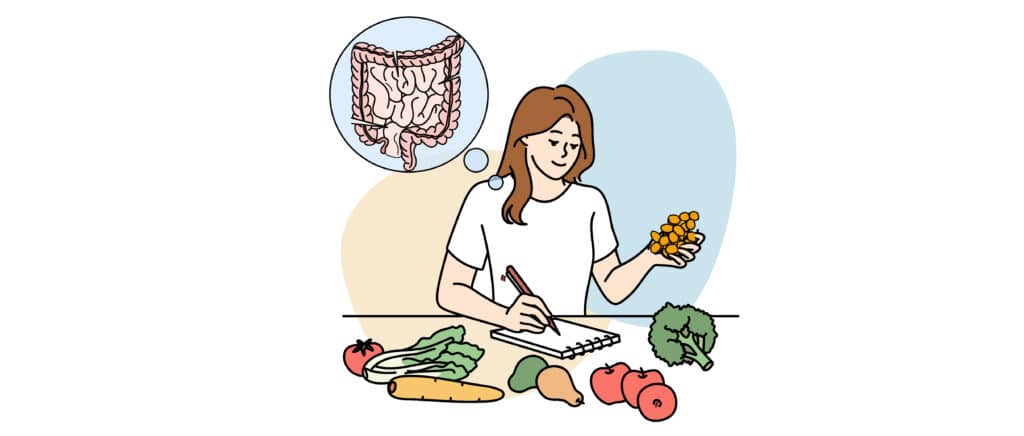What is the Difference Between Health and Wellness?
- Wellness Healthy Lifestyle
- July 4, 2023
- 14 minutes read
- There are important differences between health and wellness.
- Wellness includes six components: occupational, physical, social, intellectual, spiritual, and emotional wellness.
- Health is the state of having physical, mental, and social well-being.
- Health also refers to the absence of disease or illness.
In today’s world, health and wellness are popular buzzwords. In fact, it can be found in blogs, advertisements, and social media. But what is meant by health and wellness? What is the difference between health and wellness? How does wellness differ from health?
Today, we will talk about health and wellness. We’ll also find out what they are, what they include, and how they are different. In general, health is a part of your overall wellness. Meanwhile,wellness is made up of much more than health. Focusing on your overall wellness is an important part of being a whole person. It will eventually lead to a fulfilled life.
What is Wellness?
The idea of wellness can be defined using a wide range of terms. In fact, it may mean something different to everyone. Broadly, wellness is a multidimensional, self-directed, pursuit of choices and behaviors. They help promote an evolving mental, physical, and spiritual well-being. When striving for your well-being, you might want to focus on a number of different areas of your life. This includes your physical, mental, spiritual, emotional, social, or environmental wellness. Overall, the idea of wellness relates to how you are choosing to live your life. This is all for the purpose of promoting a balanced, global, and well-rounded sense of being your best self.
What are the components of wellness?
Wellness can be divided into six central components: occupational wellness, physical wellness, social wellness, intellectual wellness, spiritual wellness, and emotional wellness.
Occupational Wellness
Occupational wellness is a very broad topic. It relates to the idea that you can find personal satisfaction from engagement with your work or career. There are two tenets of occupational wellness. First, wellness will be enhanced when your career is consistent with what you value. It should also be aligned with what you believe in and what you are interested in. Second, being involved and active will increase your skills. It makes you a better off person than to remain uninvolved or inactive. In combination, you can strive for occupational wellness in a lot of different ways. We encourage you to seek a work environment that matches well with who you are. It must also be aligned with what you want in life.
Physical Wellness
Physical wellness concerns the importance of engagement. This is especially true in ongoing and regular physical activity. There are two tenants of physical wellness. The first is that it is better to be physically fit than not. The second is that it is better to eat foods and drinks that are good for you. They should be nutritionally beneficial to your health. Overall, targeting your physical wellness means taking care of your body. This is done by providing healthy sustenance and by being active.
Social Wellness
Social wellness is about our relationships with others. It is all about creating a mutual exchange and connection. This is both with your community and the environment. There are two tenants that make up social wellness. First, contributions to the common welfare of others is vital. Second, creating harmony and minimizing conflict is important. This is especially true for both our relationships with ourselves and others. By doing this, our wellness will be improved. Generally, you can improve your level of social wellness in a lot of different ways. This includes connecting to your community and giving to others. We also recommend supporting those around you and helping the environment.
Intellectual Wellness
Intellectual wellness is not just about how much you know. It is actually made up of all the mental activities that you do. This includes those that you find stimulating and those that use your creative brain. The tenants of intellectual wellness are relatively simple. It states that challenging or stretching our mental capabilities are good for us. They will keep us active and engaged. Additionally, knowing your own challenges and choosing how to problem solve them instead is important. It will prevent you from getting stuck in worry and inaction. This will promote improved intellectual wellness in your life.
Spiritual Wellness
Spiritual wellness is not so much about religion. It is defined by our human search for existential meaning and purpose in our lives. It is important to think about our own meaning in life. We must also embrace the meaning that others find. By doing these, we will increase our satisfaction and tolerance. Furthermore, it is important to live each day in alignment with our value system. By doing so, we will remain true to ourselves and feel content.
Emotional Wellness
Emotional wellness includes being aware and accepting of your feelings. This is true across all areas of your life. It is important to have the capacity to know how you are feeling. You must also consider the cause, and process those feelings. This process makes up your emotional wellness. The tenants of emotional wellness include focusing on awareness and emotional acceptance. This will help prevent denial. Emotional wellness also includes being as optimistic about life as possible. We recommend focusing on the more positive things instead of being pessimistic.
What is Health?
The World Health Organization defines health as, “a state of complete physical, mental, and social well-being.” It also includes that health is “not merely the absence of disease or infirmity.” In other words, health relates not just to the state of living without disease or illness. It is also concerned with your overall well-being. There are three crucial concepts embedded in this definition. First, health requires the absence of disease. Second, health requires the inclusion of well-being. Third, health encompasses these concepts on the individual level.
What are the components of health?
Health also has a number of components. All of this combined will lead to a healthy lifestyle. These components can be described using determinants and interventions. In other words, health is made up of existing qualities or factors in your life. This also includes purposeful actions you take to make improvements. Health can be impacted by predetermined biology and the daily choices you make. It is also affected by bigger picture factors like financial factors and social influences.
Health determinants
– Health determinants are risk factors and protective factors within you and your life. They influence the level of health that you have. Some determinants are broader. These include political policies, environmental qualities, and culture. Other determinants of health are biological. These include your sex and your weight. It is also affected by your blood pressure and your immune system. Health determinants can involve your financial situation and access to healthcare. Education and employment status are also determinants. Overall, each of these health determinants can impact our degree of physical and mental health.
Health interventions
– Health interventions include any action that you take to improve your health. When you engage in healthy behaviors, you are intervening to impact your health. These behaviors include increasing your exercise, changing the nutrition of your diet, or losing weight. Other activities include seeing a doctor when you are sick, and quitting smoking to prevent disease. We highly recommend adding dates to your daily diet. This is because it also counts as interventions that can help to make you a healthier person.
What is the difference between health and wellness?
There are a number of similarities between health and wellness. However, there are important differences that distinguish these two concepts. Understandably, people may use the terms wellness and health interchangeably. This is likely due to their overlap in meaning. However, it is important to understand their differences and how they are related. This will help you on your journey to achieving greater wellness and better health.
Health focuses more on your status physically and mentally. Additionally, it looks at the absence of disease or injury. Wellness gets at a more holistic perspective of a person. It is focused on identifying the different areas of your life that deserve attention.
How are health and wellness measured differently?
While related, the ways in which health and wellness are measured tend to vary. Health is more commonly measured using quantifiable, or measurable, outcomes. For example, the number of years that a person lives in a society can be determined. Additionally. the number of deaths that occur in a population during a given period can also be figured out. Another example is the occurrence of disease in a population in a place requiring disability resources. These numbers can be used to measure health in a group of people.. Your own ratings of your health and how you feel physically can be used to assess health.
Wellness tends to be a bit more qualitative. This means that it is determined by how the quality of wellness is described. There are questionnaires and assessments that exist to measure wellness. Often these are self-report measures too. These look at how much you are focusing on the different components of wellness in your life. Generally you want to consider how you feel overall. This is especially true when thinking about your wellness. Also check whether you are making time for self-care, physical exercise, and hobbies. It is also important to have social connections and rest. Wellness is an all-encompassing concept. That means that it regards a person holistically. Therefore, there may be areas of your life where you excel at wellness. Meanwhile, there are others that could be improved. While health is more of a status, wellness is more of a way of being.
What are the expectations for health versus wellness?
Maintaining both health and wellness is an active process and a dynamic process. In other words, you play an active role in your health and your wellness. In fact, this role may change over time.
Health involves taking care of your body and your brain. This can include anything from visiting your doctor regularly to going for a daily walk. The health of individuals includes the absence of major health conditions. However, it also includes how well you manage inevitable health conditions that occur. We recommend having a balanced diet, exercising, and getting good sleep. These must be done to the best of your ability. By doing so, you will avoid illness like heart disease while striving for overall health.
Wellness can be more challenging when defining expectations. In essence, you want to focus on all the aspects of who you are. It is important to create space for your wellness. This involves the physical, mental, spiritual, emotional, social, and environmental aspects. This will look different for different people. In fact, it may ebb and flow throughout your life. The most important part of wellness is just being aware of it as a concept. It is important to self-assess that you are taking care of yourself as a whole person.
Health and wellness are both important aspects of living a good life. Health focuses more on your physical and mental state. Meanwhile, wellness is more focused on viewing yourself as a whole person. This includes the physical, mental, spiritual, emotional, social, and environmental aspects. Holistic health includes wellness and physical health. They are all a part of greater wellness. How will you include a new behavior in your daily routine to improve your health and wellness?
Summary
Health and wellness and very important aspects of living a successful and happy life. While similar in concept, health and wellness include important differences. Being healthy is all about improving nutrition. It also includes decreasing the chance of disease and maintaining mental and physical fitness. Practicing wellness is about acknowledging the different parts of who you are. It also includes taking care of each of those aspects.
Scientific Information
- Holistic – Viewing the whole person and treating the person as a whole as opposed to the sum of parts.
- Pathogen – An organism that causes disease or damage to its host when inhaled, absorbed, or infected. Examples include viruses, bacteria, and fungi.
- Quantitative – Describing information based on quantity and using numbers.
- Qualitative – Describing information based on quality and using a description.









